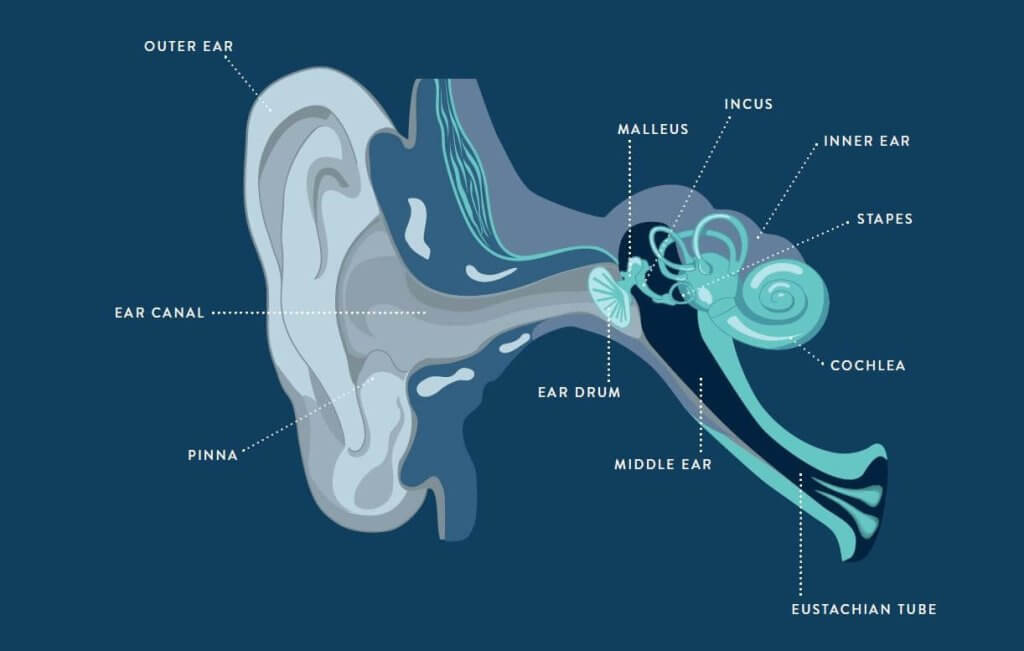As we go through our day, from the startling ring of your alarm clock in the morning to the peaceful silence at night, it’s easy to take your hearing for granted. But for every song in your headphones and conversation you enjoy, there is in fact a complex process to go from pure and simple sound waves to the noises you recognise.
Our hearing is made up of an incredible set of highly sensitive structures, all working together to turn vibrations around us into something interesting and beautiful. But how do the simple vibrations become the wonderful sounds such as conversation, music and birdsong that we enjoy?
From the instant a sound wave is created, it has three parts of your ear to travel through before your brain recognises it as sound. These three sections are known as the outer ear, the middle ear and the inner ear, all working together to help you hear.
First Stop: The Outer Ear
This begins with the part of your ear you can see: the smoothly structured cartilage formed to catch sound waves from an outside source. However, despite its name the outer ear also has a complex inner function. The ear canal is included as part of the ‘outer ear’, as well as the wax-producing ceruminous and sebaceous glands.
Wouldn’t one ear do the job? The benefit of having two ears is so we can tell the direction of sound, where the noise is coming from and how close it is two us. You’ll often find that those with one-sided hearing impairment struggle to follow group conversations, largely because they can’t interpret who is speaking as clearly. The surround-sound benefits of having two ears also helps our balance, as well as our hearing and social interactions.
Your Body’s Microphone: The Eardrum
The ear canal is approximately one inch in length. When we come to the end of it, we arrive at the start of the middle ear: the eardrum.
Also known as the tympanic membrane or myringa, it is the eardrum which amplifies sound waves through ossicles, which are three small bone structures suspended by ligaments, allowing them to respond to passing vibrations. Ossicles can increase the vibration up to 15-20 times, passing them through to the cochlea in the inner ear.
Finally, the Inner Ear
The cochlea is part of your inner ear, translating these waves into electrical signals for the brain to interpret. The cochlea is a complex and delicate mechanism, containing sensitive hair cells known as epithelial cells.
It’s these cells in the cochlea which turns the sound waves into electrochemical pulses, sending them down the vestibulocochlear nerve to our brain for it to make sense of. What sounds like a long and complicated process happens in the blink of an eye, letting you enjoy all the sounds of life around you.
Taking Care of your Ears
Like the rest of your body, your hearing needs regular check-ups to keep it in tip-top shape.
For over 10 million people in the UK, hearing clearly isn’t the simple pleasure most of us experience. Luckily, with the amazing modern technology developed in digital hearing aids, they can help you hear how you used to. Age-related hearing loss can feel like it comes from nowhere, but in reality, it develops over time until it’s at the point it can’t be ignored.
With regular hearing assessments, we can spot hearing impairment before it impacts your everyday routine. The best cure is prevention, so why not book a free hearing test online or call your local THCP practice.

